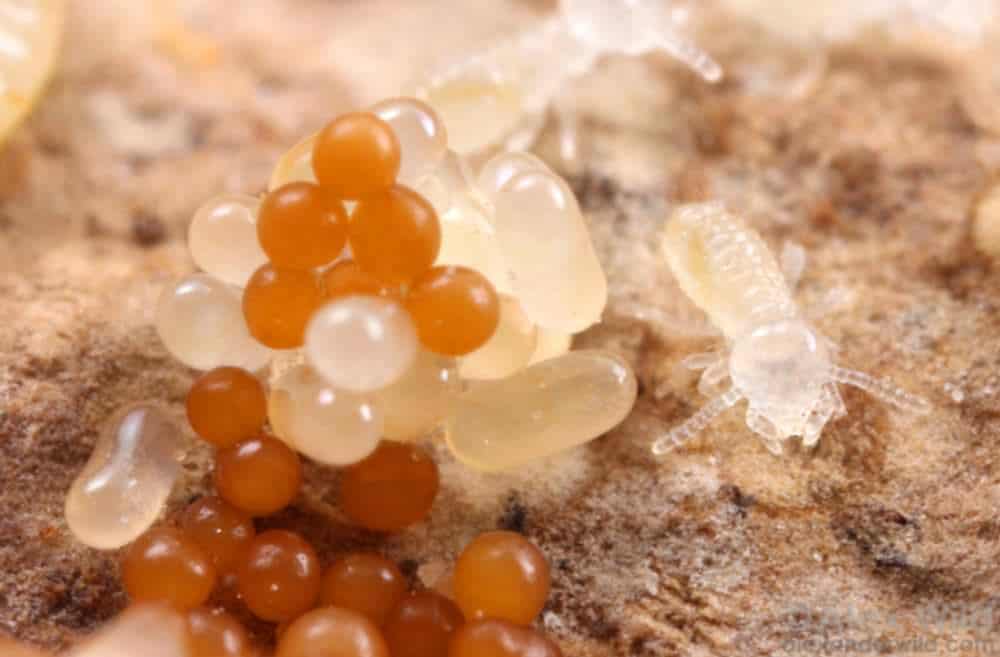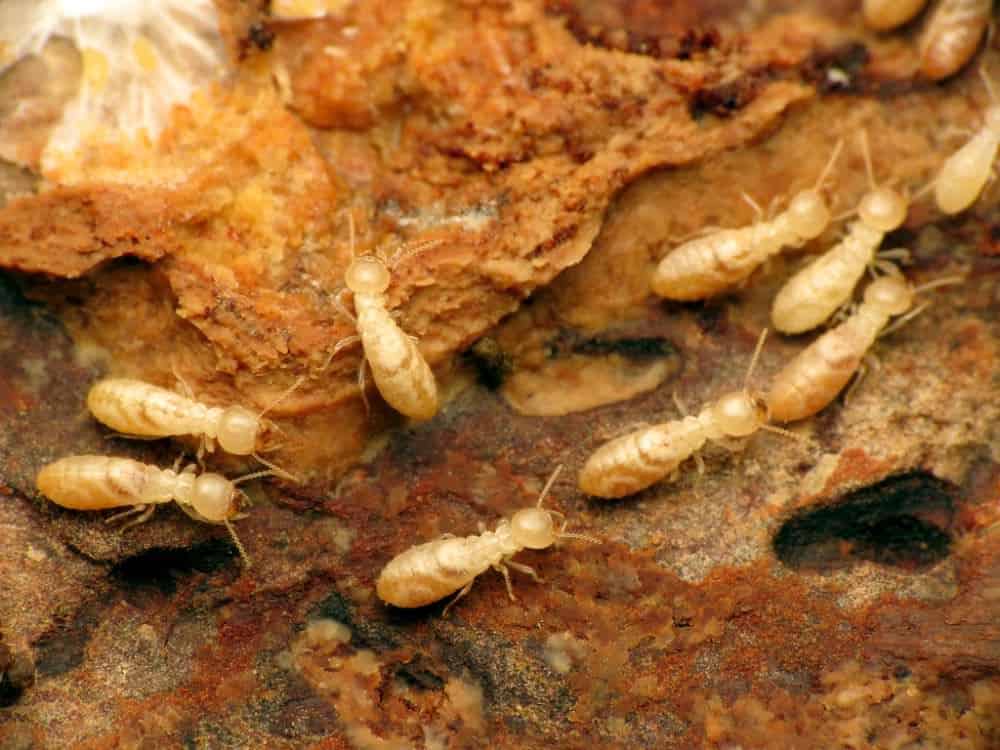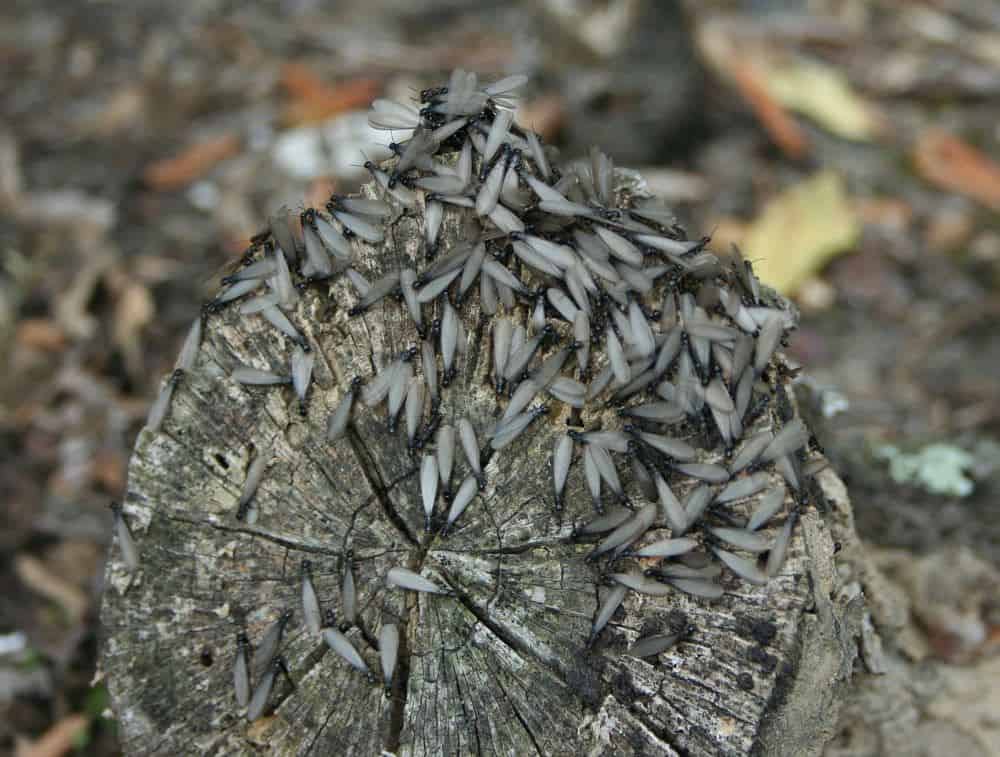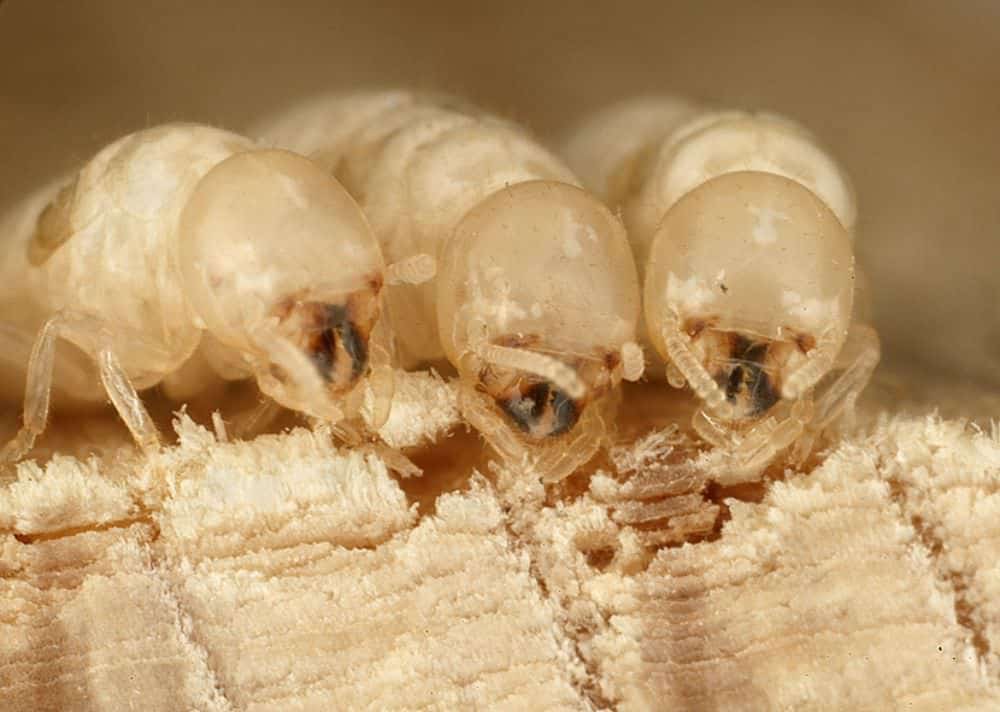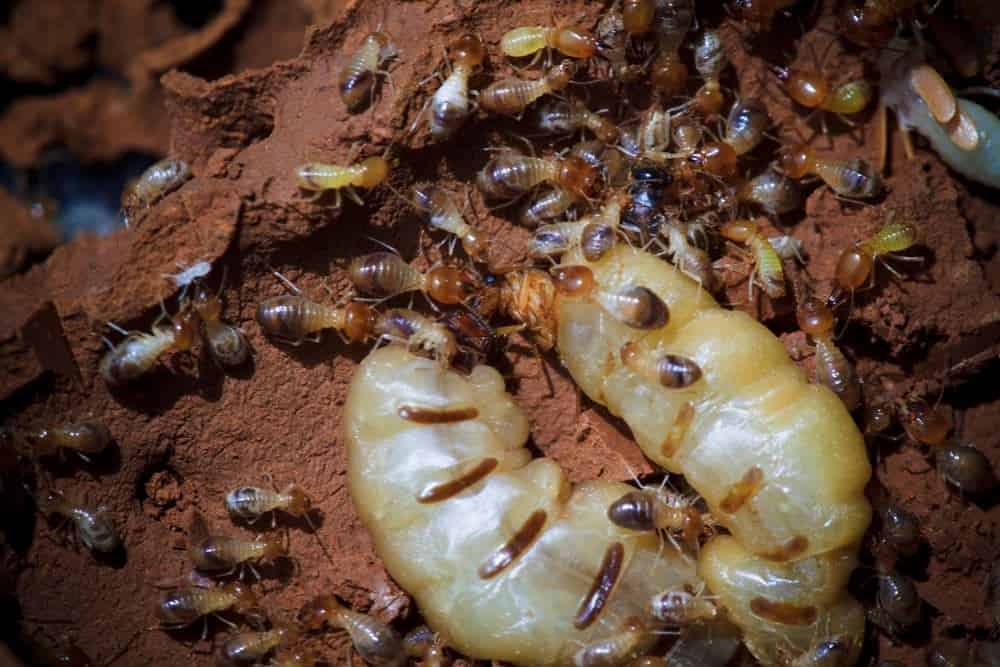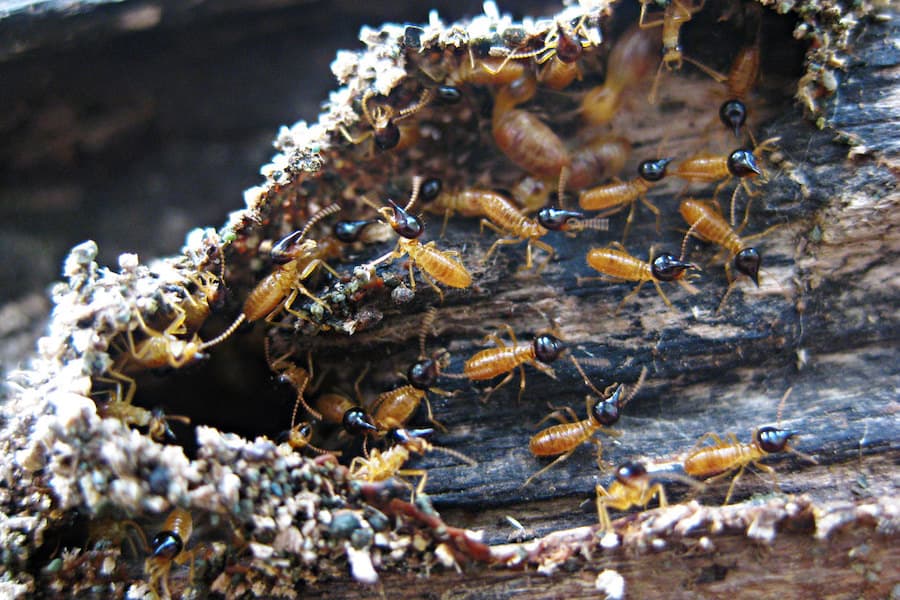What Do Termites Eat?
Termites are one of the most destructive types of pests you can have in your home. Learning about the eating habits of these insects can help you prevent an infestation.
In this article, you will discover what termites eat and how they digest wood. I will also explain why termites eat wood, as well as their favorite types.
What Do Termites Eat?
There are nearly 3,000 known species of termite. Of these, approximately 10 percent are the type of termite we consider to be pests.
Termites can be broadly classified as either higher or lower. Higher species have complex societies and nests, whereas lower species are more simplistic.
Termites are known to be wood eaters. They are, however, capable of eating more than just wood. Whether natural or manufactured, any material that contains cellulose can be sustenance for a termite. Some termites also have the ability to bite animals and people, although this is generally rare, and is not a common trait.
This includes leaves, grass, and humus. I’m not talking about the delicious dip made from chickpeas. Found in soil, humus is an organic substance, made up of decomposing animal and plant matter.
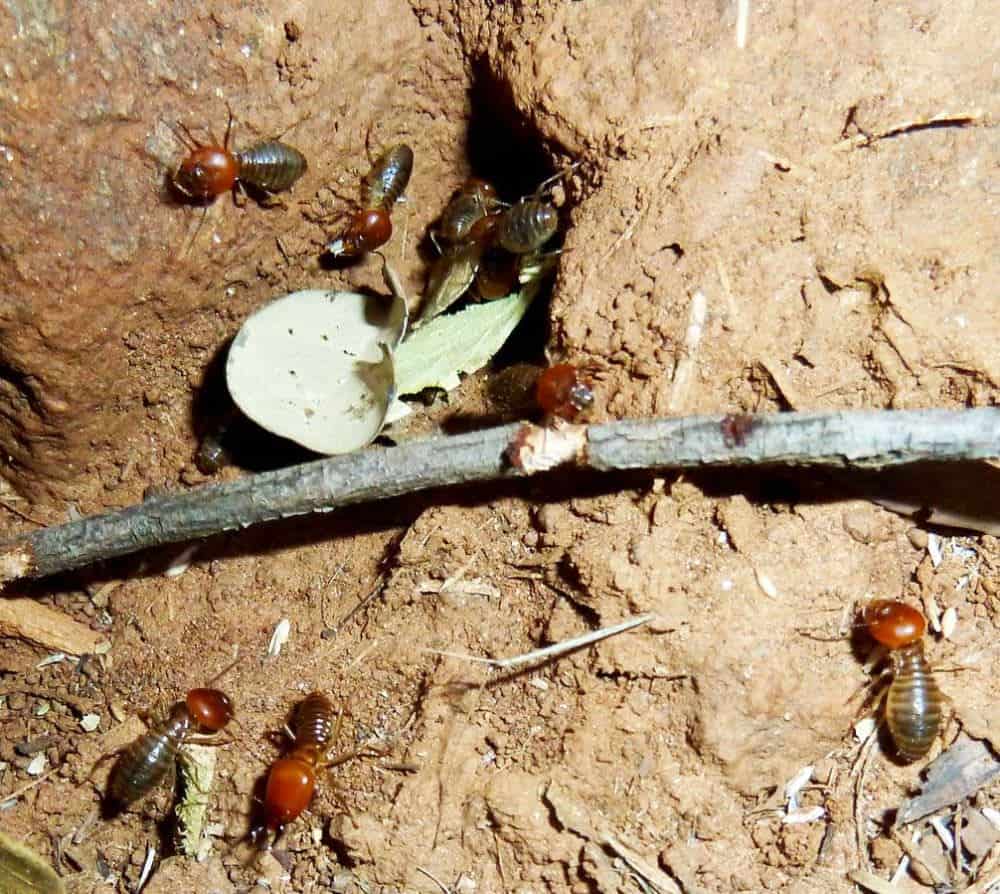
The feces (or manure) of herbivorous animals can also serve as termite food. Termites can even feed off manmade paper, cardboard, and cotton.
The majority of termite species do indeed have a preference for wood. Certain types of termite will target wood that is decaying or moist. Others will only eat wood that is dry and undamaged.
For example, as the name suggests, dampwood termites are attracted to rotting, moisture-saturated wood. Drywood termites, on the other hand, are partial to feeding off dry wood.
Although they are in the minority, there are a few types of termites that have food sources other than wood. So-called harvester termites will collect straw, leaves and grass. Other termites, mostly those classified as higher species, eat only humus in soil.
Fungus-growing termites subsist primarily off fungi. They build their nests in a similar method as honeycombs built by bees. Each chamber is seeded with fungus and plant matter.
Termites can be cannibalistic. They can eat skins shed by immature termites and the corpses of other termites. Injured termites who cannot serve the colony are also at risk of being cannibalized. Additionally, cannibalism is a form of population control. If there are excess colony members (e.g. too many soldiers) they are cannibalized by their fellows.
How Do Termites Eat?
Unlike some other insects, not all termites eat in the same way. In lower termite societies, only certain members of the colony can feed independently.
Termite societies are made up of different social classes. Each class (or caste) of termite has a different function.
Reproductives, such as the king and queen, sustain the colony population. Secondary reproductives exist to replace the king or queen in the event of death. Soldiers are the guardians of the colony. They defend their fellows against enemies, protecting the nest’s entrances and exits. Workers are the lowest and largest social class of termite. They perform construction duties and other laborious tasks.
Only the workers are capable of feeding directly. Young termites, soldiers, and reproductives require assistance. The workers feed their fellows in one of two ways depending on the species.
Mouth-to-mouth feeding involves regurgitation. The worker will disgorge chewed up wood, mixed with its own saliva. The feeding termite then ingests this paste.
The second method is anal feeding, exclusively for immature termites. Worker termites excrete partially digested wood and protozoans anally in drops. Protozoans are a type of microorganism present in the digestive tracts of some termite species. The young termites consume this paste directly from the worker’s anus. This excretion is different from fecal matter, and is produced only during feedings.
Why Do Termites Eat Wood?
Despite variations in habitat and appearance, all termites take nutrition from cellulose, which is a type of sugar, known as a polysaccharide.
Trees, plants, and other living organisms contain cellulose. This is why termites eat wood and other plant-based materials, such as leaves. This compound can also be found in other products, from pharmaceuticals to cellophane.
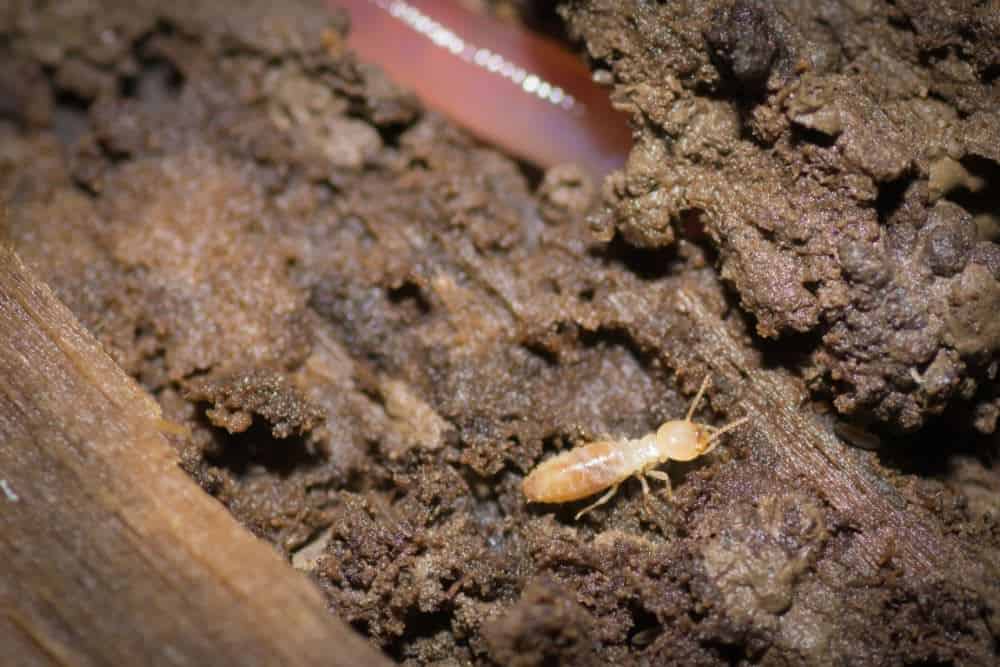
Termites are built to be able to derive nutrition from cellulose. However, not all species break down consumed cellulose in the same way.
Lower termite species have protozoans in their guts. These microorganisms produce special enzymes that break down the cellulose in wood. The end result of this process is glucose. Without protozoans, lower termites would not be capable of digesting wood. If a termite cannot acquire nutrition from cellulose by breaking it down, the termite will starve.
Young termites lose these protozoans each time they molt, until they reach maturity. This is the reason that a termite is fed anally by workers until it is fully grown. Anal feeding ensures transmission of protozoans from the worker to the immature termite.
Higher termite species have bacteria in their digestive tracts. The bacteria in higher termite guts excrete the same enzymes as protozoans. The guts of some species produce these enzymes (cellobiose and cellulose) without bacteria or protozoans.
Other types of termites eat wood to meet additional nutritional needs. Decaying wood can be rich in fungi, which contain their own nutrients.
Will Termites Eat Any Type of Wood?
For termites, the condition of the wood is more important than the type. Termites are able to eat wood from almost any species of tree.
Only drywood termites eat dry wood. Dampwood and subterranean termites choose damp, decaying wood. Once the wood has been water-damaged, it is easier for these termites to eat and digest.
However, while they can eat any type of wood, there are certain parts of a tree that termites favor over others. These woods are therefore more vulnerable to termites. There are also woods that termites are less attracted to or actually repelled by. Some of the woods in this category are naturally repellent, others are chemically treated.
Preferred Wood Types
The newly formed wood between a tree’s bark and heartwood is known as sapwood. This wood contains more moisture than the outer bark or tough inner core. Sapwood is one of the least resistant woods to termite infestations. Keep in mind that subterranean and dampwood termites are attracted to moist wood.
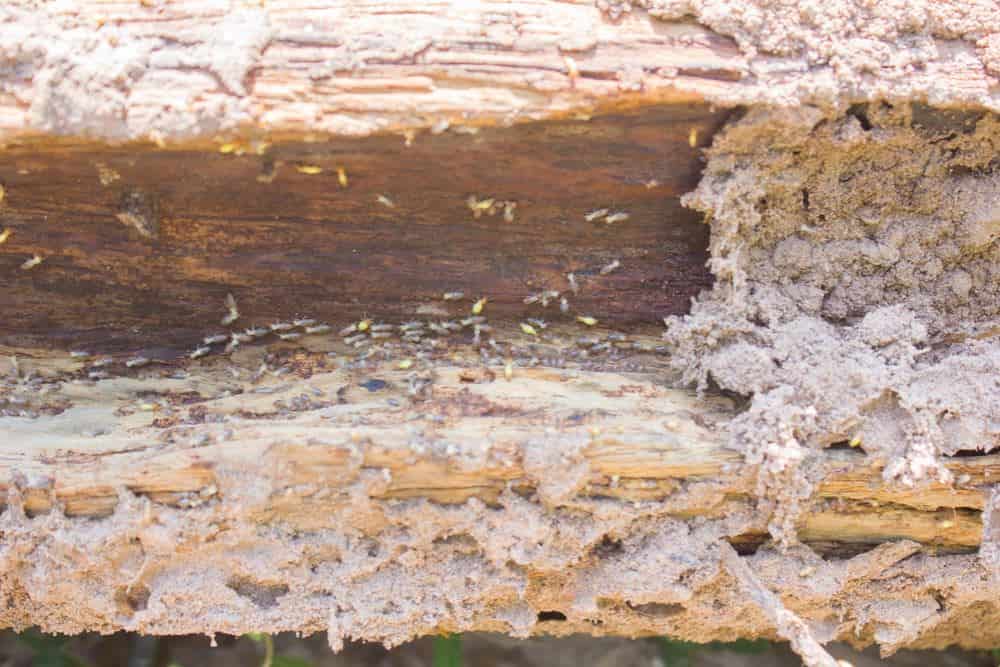
This type of wood is also more susceptible to fungal decay. Sapwood treated with termiticides to repel termites is more resistant.
Resistant Wood Types
As I’ve mentioned, some types of wood are naturally termite resistant. This includes the heartwood of certain tree species. Heartwood is the most durable part of the tree. Timber made from heartwood is hard and resilient, helping to delay significant termite damage for a foreseeable while.
There are roughly ten species of tree that are considered termite resistant. A few examples are chestnut, redwood, and black walnut. Even in these trees, however, the bark and sapwood are not as repellent as the heartwood.
Heartwood of termite-resistant trees is infused with natural chemicals. These chemicals have anti-termite as well as anti-fungal properties. Still, this does not mean that they are immune to a termite infestation in the long-term. Once the wood begins to decay, it is just as attractive as less resistant woods.
These woods should not be thought of as immune to termites. Termites can still tunnel through to get to more appealing, vulnerable wood. Additionally, termites are opportunistic pests. If no other resources are available, they will attack and infest even resistant woods.
Chemically Treated Woods
Treating wood with chemicals is the best method of preventing termites. Treated woods are less likely to decay rapidly.
In areas at high-risk for termite infestation, wood can be infused with termiticides. In such cases, even if termites do approach the structure, eating the wood will poison them.

